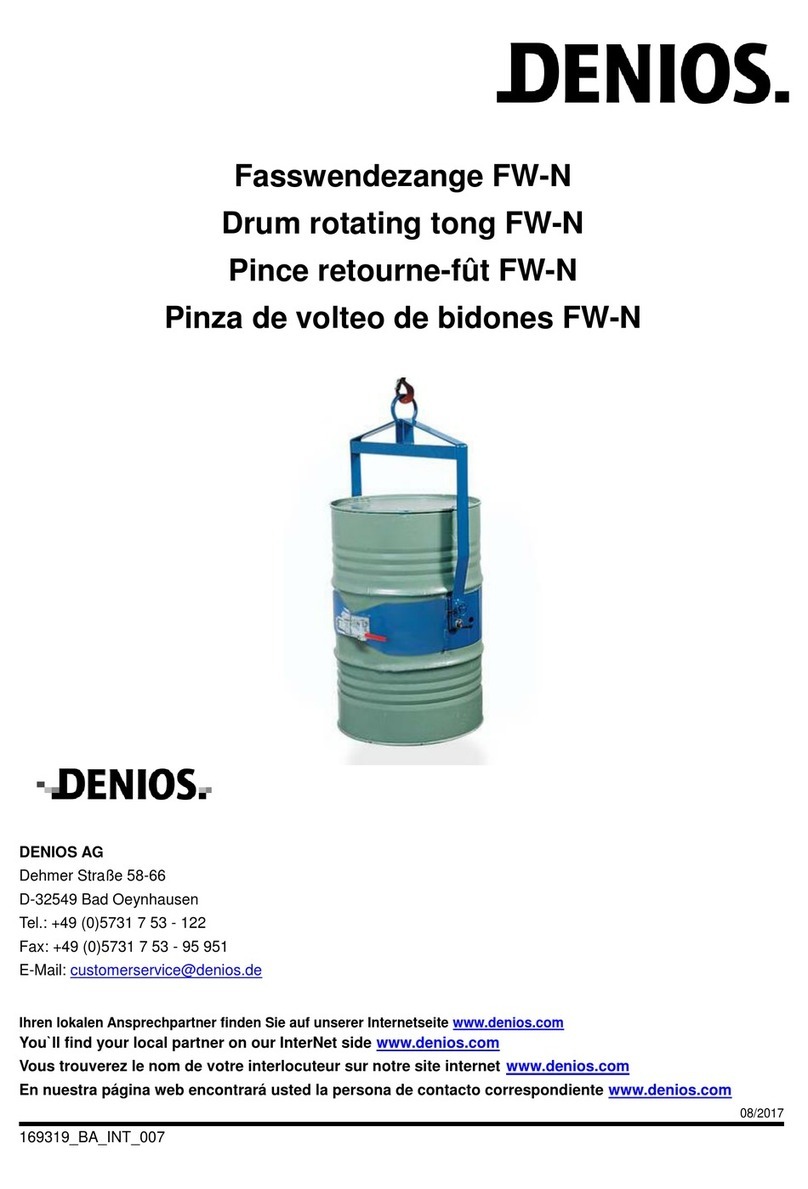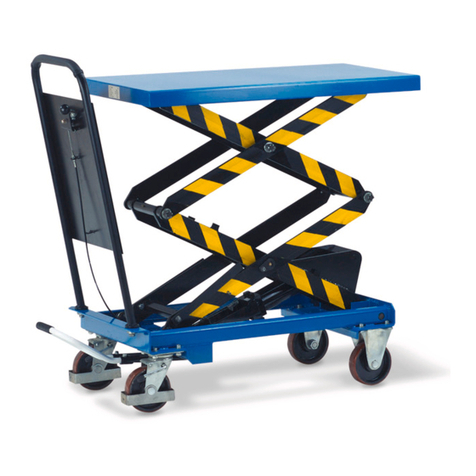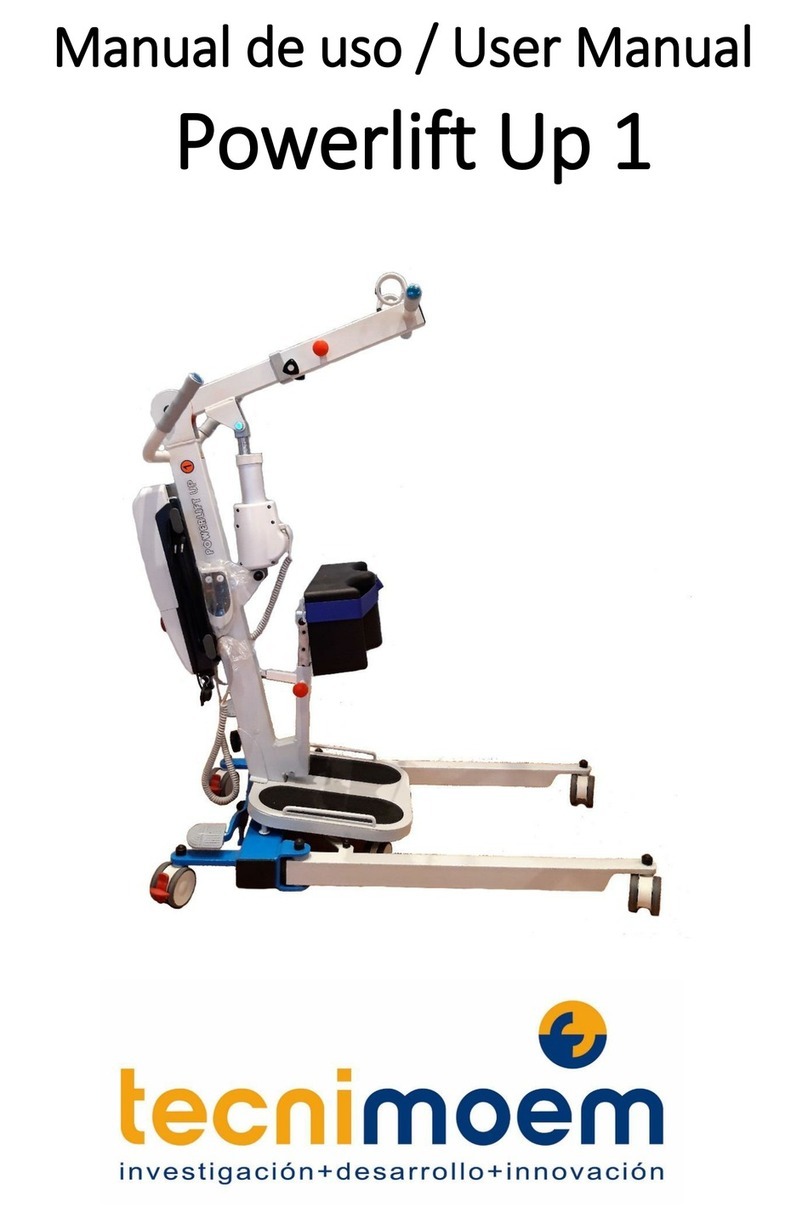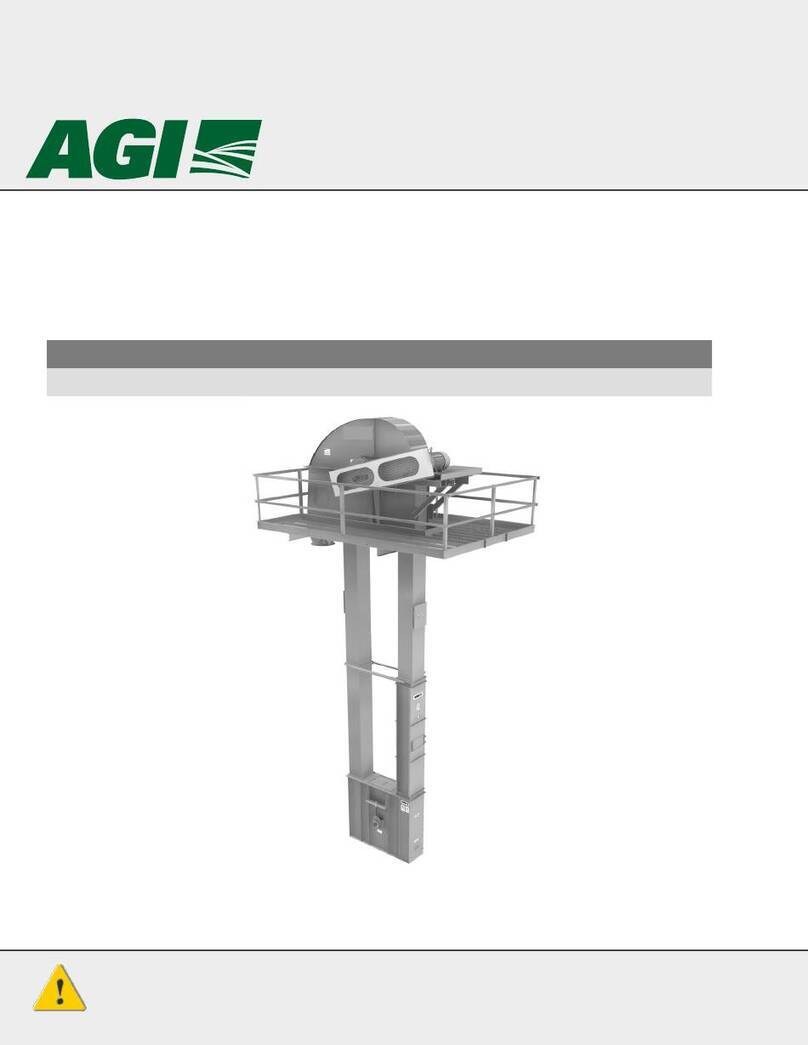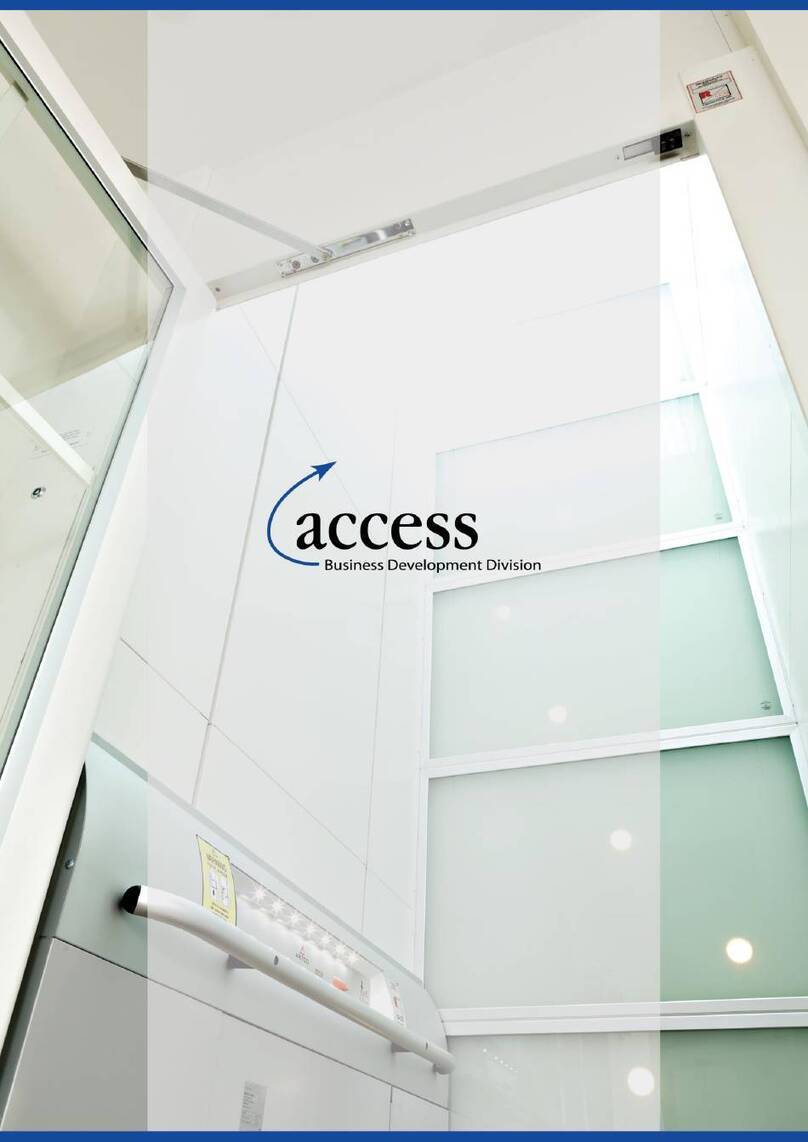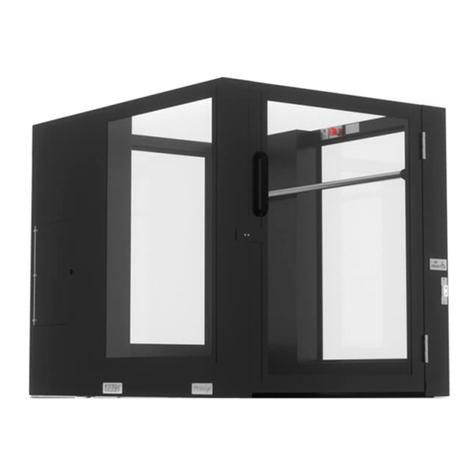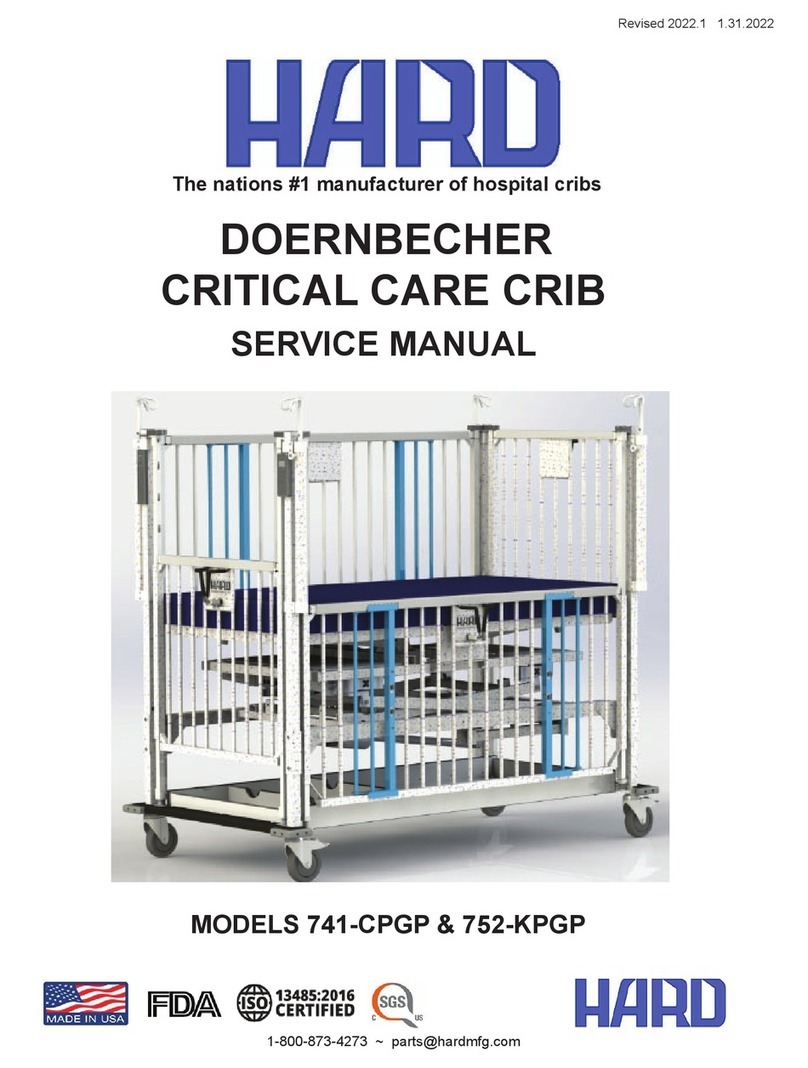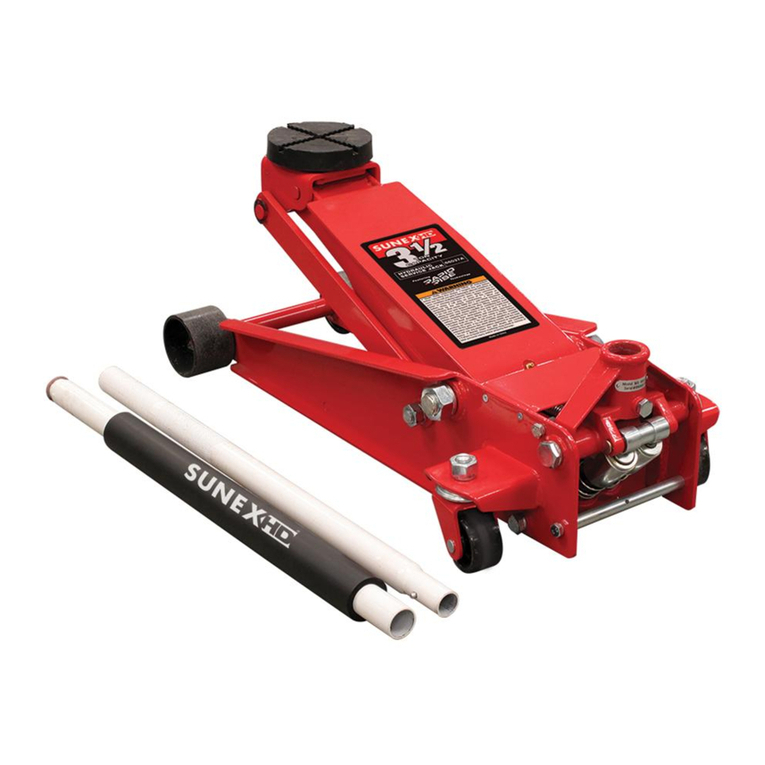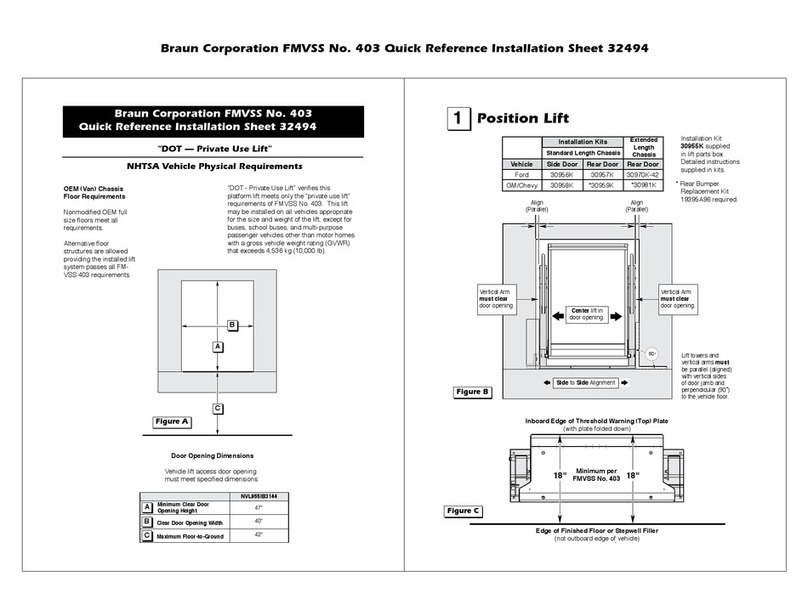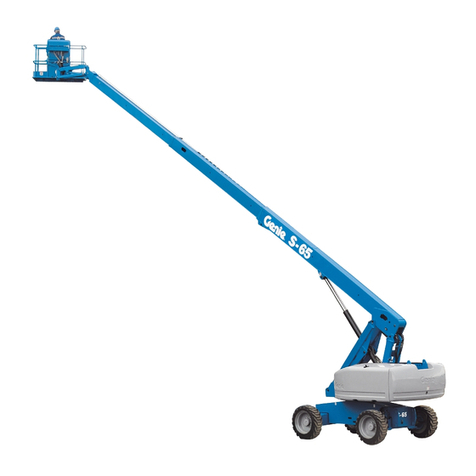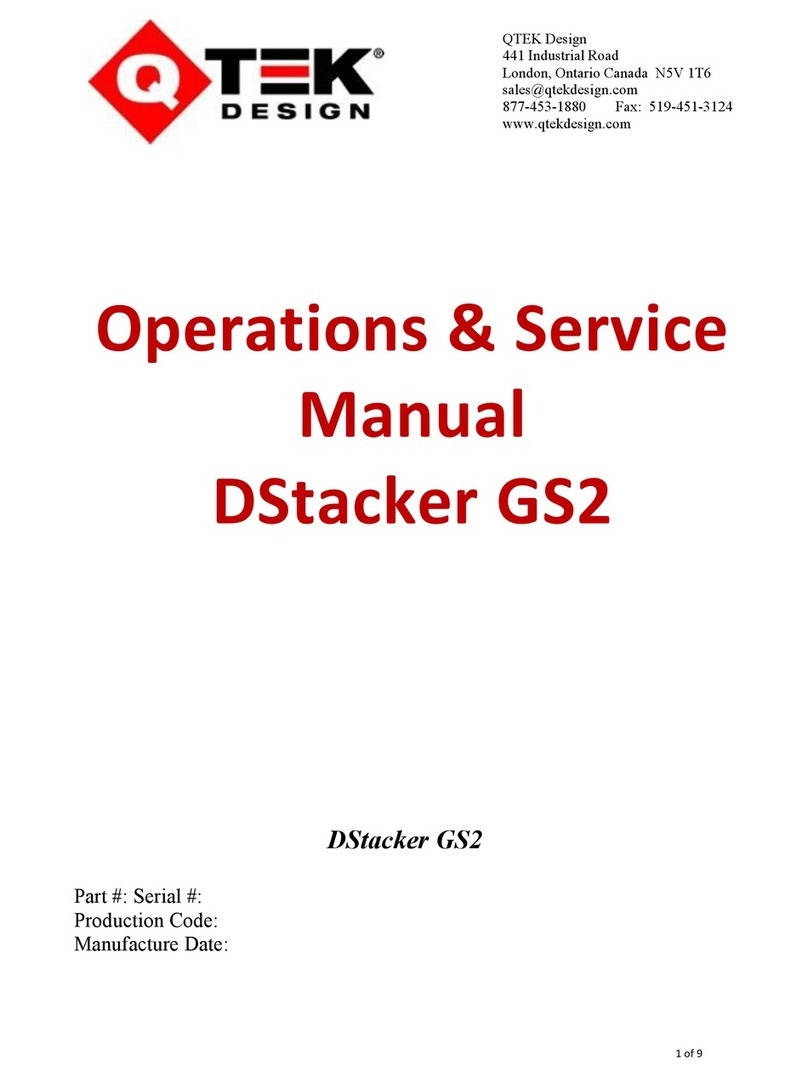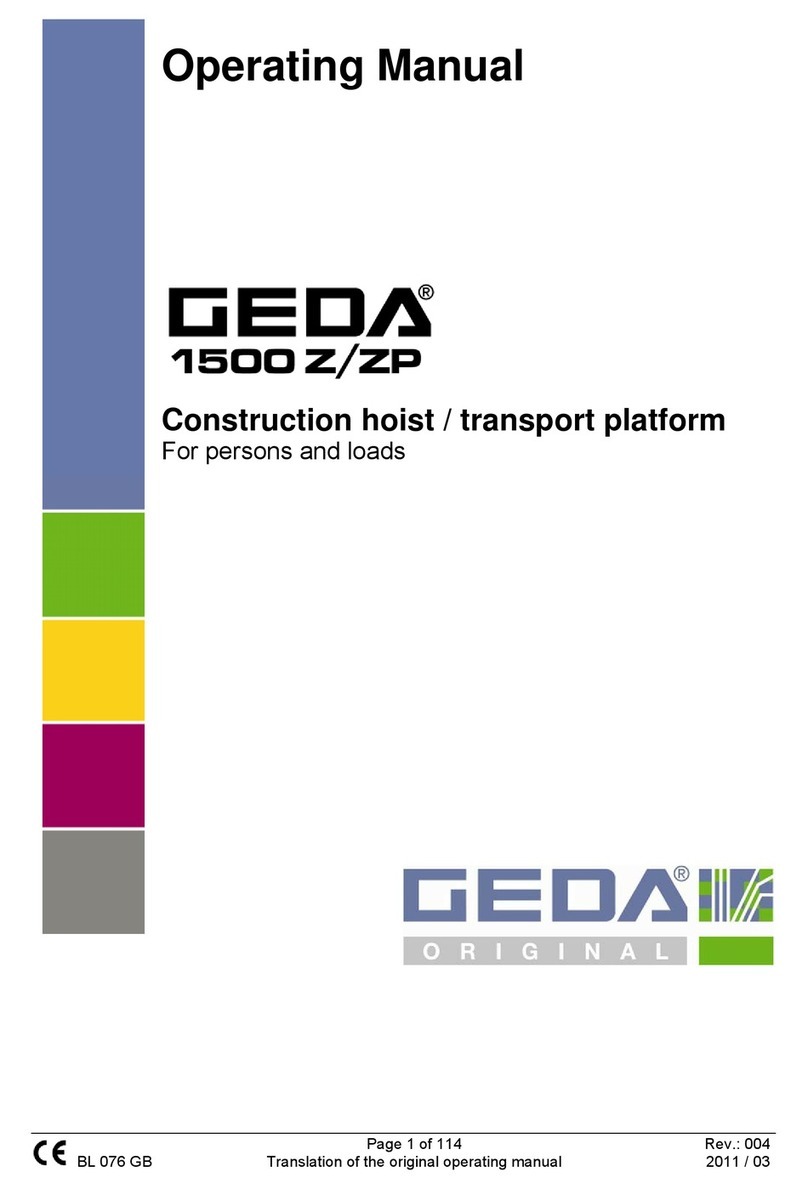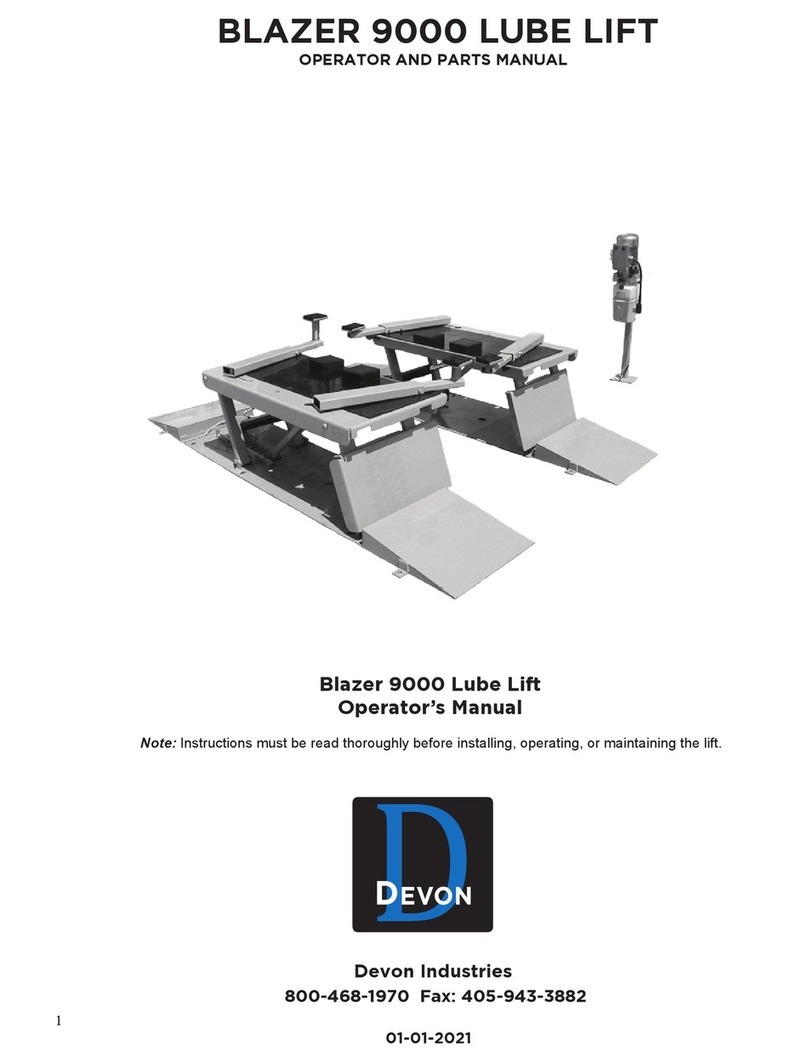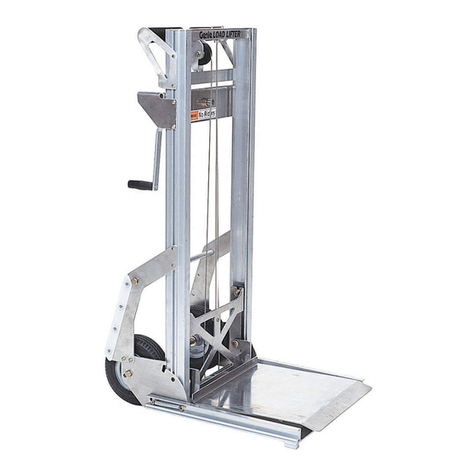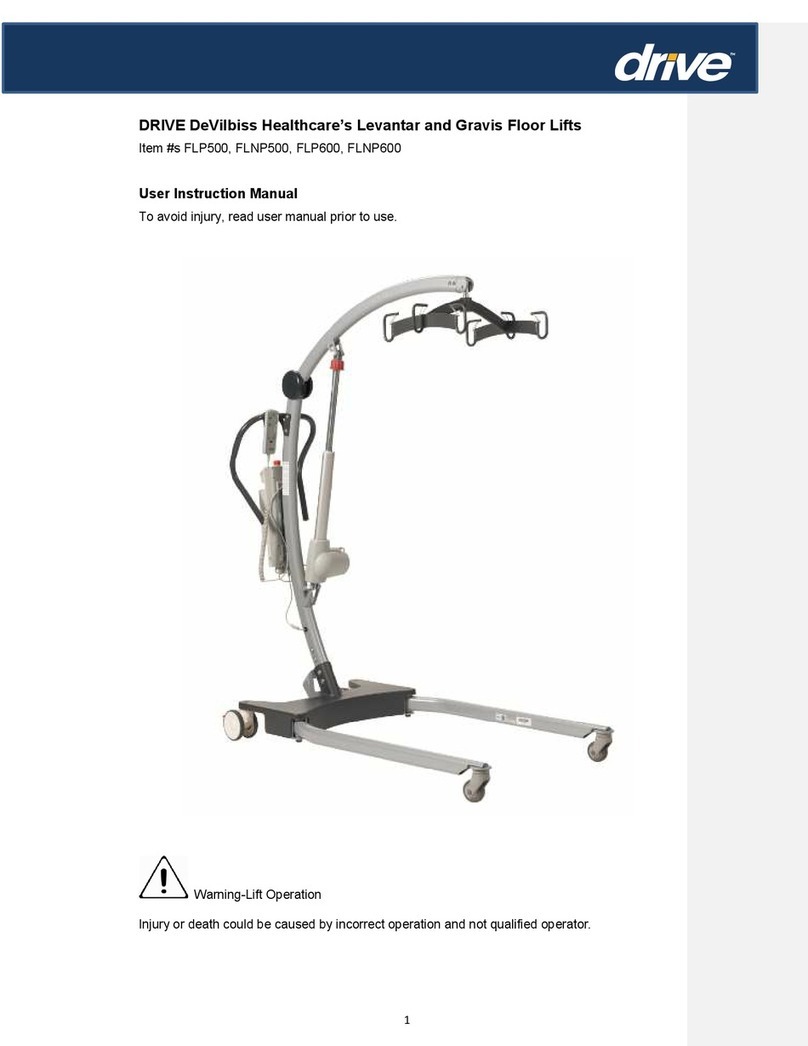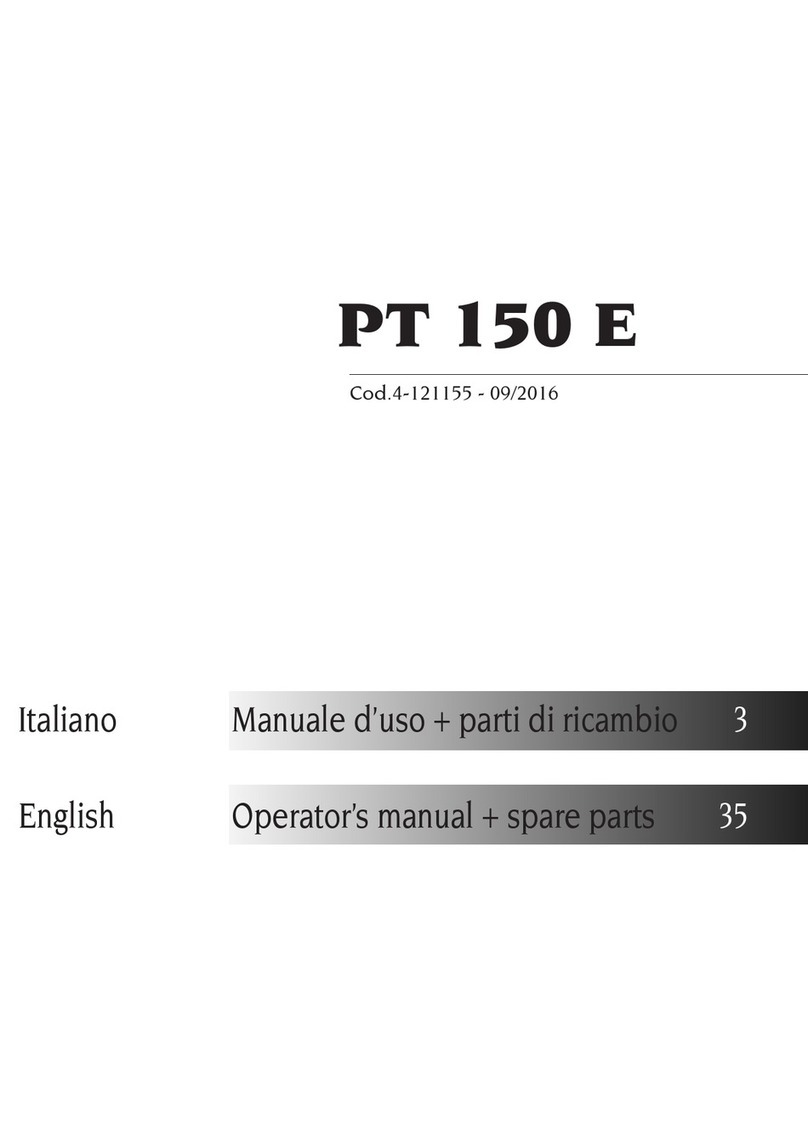Denios LD User manual

Fasslifter LD
Drum lifter LD
Sollevafusti LD
DENIOS AG
Dehmer Straße 58-66
D-32549 Bad Oeynhausen
Tel.: +49 (0)5731 7 53 - 122
Fax: +49 (0)5731 7 53 - 95 951
E-Mail: custom[email protected]
Ihren lokalen Ansprechpartner finden Sie auf unserer Internetseite www.denios.com
You`ll find your local partner on our InterNet side www.denios.com
Vous trouverez le nom de votre interlocuteur sur notre site internet www.denios.com
En nuestra página web encontrará usted la persona de contacto correspondiente www.denios.com
Potete trovare il vostro partner locale sul nostro sito internet www.denios.com
04/2016
170261_BA_INT_008

Fasslifter LD Seite 2 von 11 Seiten Ausgabe04/2016
164383; 227161
Pos.
Deutsch
Englisch
Italiano
1
Klammer
Clamps
Pinza
2
Hubpedal
Lifting pedal
Pedale di
sollevamento
3
Ablassventil
Release valve
Valvola di scarico
4
Vorderrad
Front wheel
Ruota anteriore
5
Hinterrad mit
Feststellbremse
Rear wheel with
locking brake
Ruota posteriore
con freno di fermo
1250 mm
1380 mm
880 mm
1020 mm
900 mm

Fasslifter LD Seite 3 von 11 Seiten Ausgabe04/2016
164383; 227161
Allgemeine Hinweise
Ohne Genehmigung des Herstellers dürfen keine Veränderungen, An- oder Umbauten am Produkt vorgenommen
werden. Für Veränderungen ohne Genehmigung des Herstellers wird keine Haftung übernommen und die
Gewährleistung erlischt.
Die nationalen Vorschriften und Sicherheitsbestimmungen sind zu beachten.
Sicherheitshinweise
Vor der Benutzung ist das Produkt auf seine einwandfreie Funktion zu überprüfen. Bei auftretenden Mängeln darf
es nicht eingesetzt werden.
Es ist die BGV D8 (Winden, Hub- und Zuggeräte) und die BGV D27 (Flurförderfahrzeuge)
zu beachten!
Nur für den vorgesehen Einsatz/Gebrauch einsetzen!
Die Last darf nicht im angehobenen Zustand belassen werden.
Zum Transport dürfen die Fässer nur leicht angehoben sein.
Die angegebene Tragfähigkeit darf nicht überschritten werden!
Einsatz und Verwendungszweck
Mit dem Fasslifter LD können von Stahl-Spundfässern gemäß DIN EN ISO 15750-2 mit einem Volumen von 212L,
216,5L und 230L angehoben und transportiert werden. 2 Lenkrollen und 2 große Bockrollen sorgen für leichten
und komfortablen Transport. Europaletten oder DENIOS-Auffangwannen können seitlich beladen werden.
Der Untergrund muß glatt, eben und fest sein.
Der Einsatz-Temperaturbereich liegt von –10°C bis + 40°C.
Technische Daten
Traglast: 350 kg
Deutsch

Fasslifter LD Seite 4 von 11 Seiten Ausgabe04/2016
164383; 227161
Betrieb
Aufnehmen
Fahren Sie mit dem abgesenkten Fasslifter an das Fass heran. Fixieren Sie die Feststellbremse. Durch Betätigen
des Fußpedals heben Sie nun die Haltemechanik auf die notwendige Höhe an. Um das Fass aufnehmen zu
können, muss sich der obere Fassrand zwischen den Zähnen der Klammer befinden. Sobald der untere
Greifzahn der Klammer den Fassrand berührt, klemmt der obere Greifzahn das Fass fest und es wird nun sicher
gehalten. Weitere Pumpbewegungen mit dem Fußpedal heben das Fass an.
Hinweis: Der Fasslifter ist mit einem Sicherheitsventil ausgerüstet. Bei Überlastung wird das Sicherheitsventil
wirken und die Last kann nicht angehoben werden
Verfahren
Das Fass darf zum Verfahren nur leicht angehoben sein. Lösen Sie die Feststellbremse und ziehen oder schieben
Sie den Fasslifter zum neuen Bestimmungsort.
Abladen
Fixieren Sie die Feststellbremse. Öffnen Sie langsam das Ablassventil (gegen den Uhrzeigersinn), um das Fass
abzusenken. Sobald das Fass den Boden berührt, wird es automatisch entriegelt. Anschließend muss das
Ablassventil wieder geschlossen werden.
Wartung und Instandhaltung
- Die beweglichen Bauteile des Produktes müssen regelmäßig auf Funktion und Leichtgängigkeit überprüft
und gegebenenfalls mit handelsüblichem Fett nachgeschmiert werden.
- Die Klammer muss täglich auf Funktion, insbesondere auf Verschleiß kontrolliert und gegebenenfalls
ausgetauscht werden.
- Nach Schadensfällen und besonderen Vorkommnissen, die die Tragfähigkeit beeinflussen können, sowie
nach Instandsetzung ist eine außerordentliche Prüfung durch einen Sachkundigen durchzuführen
Hydraulik
- Falls die Hebevorrichtung sich nicht bis zur höchsten Position heben lässt, überprüfen Sie ob sich
ausreichend Öl im Zylinder befindet. Falls nicht, füllen Sie Öl nach!
Wenn Sie Öl nachfüllen, verwenden Sie ein Hydraulik-Öl entsprechend ISO VG 46.
- Vor dem Nachfüllen oder Austauschen des Hydrauliköls muss die Hebevorrichtung vollständig
herabgelassen werden!
- Falls an der Kolbenstange oder mittig am Zylinder Öl austritt überprüfen Sie die Dichtungen. Wenn diese
defekt sind müssen sie ausgetauscht werden.

Fasslifter LD Seite 5 von 11 Seiten Ausgabe04/2016
164383; 227161
Konformitätserklärung
EG-Konformitätserklärung
Hiermit erklären wir, die DENIOS AG, Dehmer Straße 58-66, 32549 Bad Oeynhausen, dass das Produkt
mit den folgenden Richtlinien übereinstimmt.
Type: Fasslifter LD
EG Richtlinien
Maschinenrichtlinie 2006/42/EG
Angewandte harmonisierte Normen
DIN EN 349
EN 1757-2
DIN EN ISO 12100
EN ISO 13857
Dokumentationsbevollmächtigter DENIOS AG, 27.04.2016
Herr Roither Benedikt Boucke
Geschäftsleitung - Vorstand -

Fasslifter LD Seite 6 von 11 Seiten Ausgabe04/2016
164383; 227161
General Instructions
No modifications or alterations can be made to the product without authorisation from the manufacturer, in the
event of this, the guarantee will be invalidated.
National standards and safety regulations must be observed.
Safety instructions
Before the product is used, it is to be checked for correct functioning. Should any defects appear, it must not be
used!
The German regulations BGV D8 (hoisting, lifting and winching equipment and BGV D27 (industrial trucks)
are to be observed!
Only use for the intended purpose!
The load must not be left in raised position.
The drums must only be raised slightly for when being transported.
The bearing capacity given must not be exceeded!
Use and intended purpose
With the LD drum lifter 200 litre steel drums can be raised and transported. 2 swivel castors and 2 large fixed
castors provide easy and comfortable transport. Euro pallets or DENIOS sumps can be loaded sideways.
The surface must be smooth, flat and firm.
The operational temperature range is from -10°C to 40°C.
Specifications
Safe working load: 350 kg
English

Fasslifter LD Seite 7 von 11 Seiten Ausgabe04/2016
164383; 227161
Operation
Lifting
Drive the lowered drum lifter up to the drum. Fix the securing brake. Now raise the retaining mechanism to the
required height by actuating the foot pedal. To be able to pick up the drum the top rim of the drum must be
between the teeth of the grippers. As soon as the lower gripping tooth touches the rim of the drum the upper
gripping tooth engages tightly and it is now held securely. Further pumping movements with the foot pedal now lift
the drum.
NB: The drum lifter is equipped with a safety valve. In case of overloading the safety valve comes into
operation and the load cannot be raised.
Moving
The drum must only be slightly raised for moving. Release the securing brake and pull or push the drum lifter to its
new location.
Unloading
Fix the securing brake. Open the relief valve (anticlockwise) to lower the drum. As soon as the drum touches the
ground it is automatically unlocked. Then the relief valve must be reclosed.
Maintenance and servicing
- The moving components of the product must be checked regularly for function and ease of movement and if
required relubricated with commercially-available lubricating grease.
- The grippers must be checked daily particularly for wear and if necessary replaced.
- After cases of damage and particular incidents that could influence the carrying capacity and after repair an
extraordinary testing by a qualified person is to be carried out.
Hydraulics
- If the lifting system does not lift up to the highest position check if there is sufficient oil in the cylinder. If not
add oil!
To fill up use a hydraulic oil in compliance with ISO VG 46.
- Before adding oil or changing the hydraulic oil the lifting equipment must be completely lowered!
- If oil leaks out at the plunger or centrally on the cylinder check the seals, If these are defective they must be
replaced. In this case contact DENIOS AG.

Fasslifter LD Seite 8 von 11 Seiten Ausgabe04/2016
164383; 227161
Declaration of conformity
EC Declaration of Conformity
Herewith we, the DENIOS AG, Dehmer Straße 58-66, D 32549 Bad Oeynhausen, declare that the product
complies with following guidelines.
Type: Drum lifter LD
Safe working load: 350 kg
EC Directives
Machinery directive 2006/42/EC
Harmonised standards applied
DIN EN 349
EN 1757-2
DIN EN ISO 12100
EN ISO 13857
Person responsible for documentation DENIOS AG, 27.04.2016
Mr.Roither Benedikt Boucke
Head of engineering - Board of governors -

Fasslifter LD Seite 9 von 11 Seiten Ausgabe04/2016
164383; 227161
Informazioni generali
Senza autorizzazione del produttore non possono essere apportate modifiche, aggiunte o trasformazioni al
prodotto. In caso di modifiche senza l'autorizzazione del produttore, non si assume alcuna responsabilità e la
garanzia decade.
Devono essere rispettate le normative e le prescrizioni nazionali di sicurezza.
Indicazioni sulla sicurezza
Prima di utilizzare il prodotto è necessario controllarne il corretto funzionamento. Dovessero presentarsi eventuali
difetti, non deve essere utilizzato.
Devono essere rispettate le normative tedesche BGV D8 (argani, apparecchi di sollevamento e di trazione)
e BGV D27 (veicoli per trasporto interno)!
Utilizzare solo per lo scopo previsto!
Il carico non deve essere lasciato in posizione sollevata.
Per il trasporto i fusti possono essere sollevati solo leggermente.
Non superare la capacità di carico specificata!
Impiego e utilizzo
Con il sollevafusti LD possono essere sollevati e trasportati fusti in acciaio con tappi DIN EN ISO 15750-2 con
un volume di 212, 216,5 e 230 litri. Due ruote girevoli e due fisse garantiscono un trasporto facile e confortevole.
Gli europallet o le vasche DENIOS possono essere caricate lateralmente.
Il fondo deve essere liscio, piano e stabile.
La temperatura d'impiego va da -10°C a 40°C.
Dati tecnici
Portata: 350 kg
Italiano

Fasslifter LD Seite 10 von 11 Seiten Ausgabe04/2016
164383; 227161
Funzionamento
Sollevamento
Avvicinarsi al fusto con il sollevafusti abbassato. Bloccare il freno di sicurezza. Ora, utilizzando l’apposito pedale,
sollevare il meccanismo di aggancio del fusto sino all’altezza desiderata. Per poter sollevare il fusto, il bordo
superiore dello stesso deve essere posizionato tra i denti della pinza. Non appena il dente inferiore della pinza
tocca il bordo del fusto, quello superiore chiude saldamente la presa ed il fusto è quindi trattenuto in sicurezza. Un
ulteriore pompaggio con il pedale porterà al sollevamento del suddetto fusto.
Nota: Il sollevafusti è equipaggiato con una valvola di sicurezza. In caso di sovraccarico, la valvola si attiva e
impedisce il sollevamento del carico.
Movimentazione
Per la movimentazione, i fusti devono essere sollevati soltanto leggermente. Rilasciare il freno e tirare o spingere
il sollevafusti sino alla nuova posizione.
Scarico
Bloccare il freno di sicurezza. Aprire lentamente la valvola di rilascio (in senso antiorario) per abbassare il fusto.
Non appena il fusto tocca il suolo, il rilascio avviene automaticamente. A questo punto, la valvola di rilascio deve
essere richiusa nuovamente.
Manutenzione
- Il funzionamento ed il corretto movimento delle parti mobili del prodotto devono essere controllati con
regolarità e, se necessario, bisogna provvedere a lubrificare con del grasso lubrificante disponibile in
commercio.
- La pinza deve essere ispezionata ogni giorno; è necessario verificare la sua funzionalità con particolare
attenzione all’usura e, se necessario, provvedere alla sua sostituzione.
- Eseguire verifiche straordinarie a cura di un esperto dopo incidenti o eventi particolari che possono avere
influenza sulla capacità di carico e dopo manutenzioni correttive.
Parte idraulica
- Se il dispositivo di sollevamento non riesce a raggiungere l’altezza massima, verificare che vi sia olio
sufficiente nel cilindro. Se così non fosse, aggiungere olio!
Per i rabbocchi utilizzare un olio idraulico del tipo ISO VG 46.
- Prima di aggiungere o sostituire l’olio idraulico, il sistema di sollevamento deve essere abbassato
completamente!
- Se si presenta una perdita allo stantuffo del pistone o al centro del cilindro, controllare le guarnizioni. Se
risultano difettose, è necessario provvedere alla loro sostituzione.

Fasslifter LD Seite 11 von 11 Seiten Ausgabe04/2016
164383; 227161
Dichiarazione di conformità
Dichiarazione di conformità CE
Con la presente noi, DENIOS AG, Dehmer Straße 58-66, 32549 Bad Oeynhausen, dichiariamo che il prodotto
è conforme alle seguenti direttive.
Tipo: Sollevafusti LD
Direttive CE
Direttiva Macchine 2006/42/CE
Norme armonizzate applicate
DIN EN 349
EN 1757-2
DIN EN ISO 12100
EN ISO 13857
Responsabile della documentazione DENIOS AG, 27.04.2016
Signor Roither Benedikt Boucke
Direzione Aziendale - Consiglio di Amministrazione -
Table of contents
Languages:
Other Denios Lifting System manuals
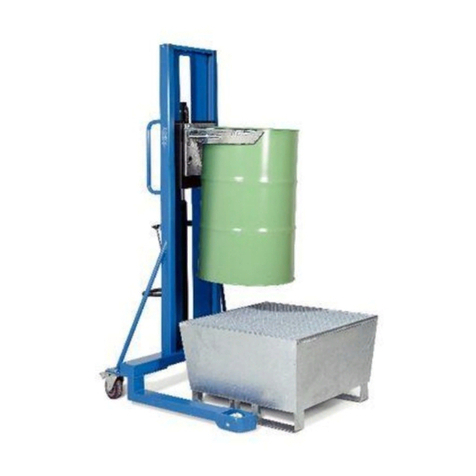
Denios
Denios FL 8-K User manual
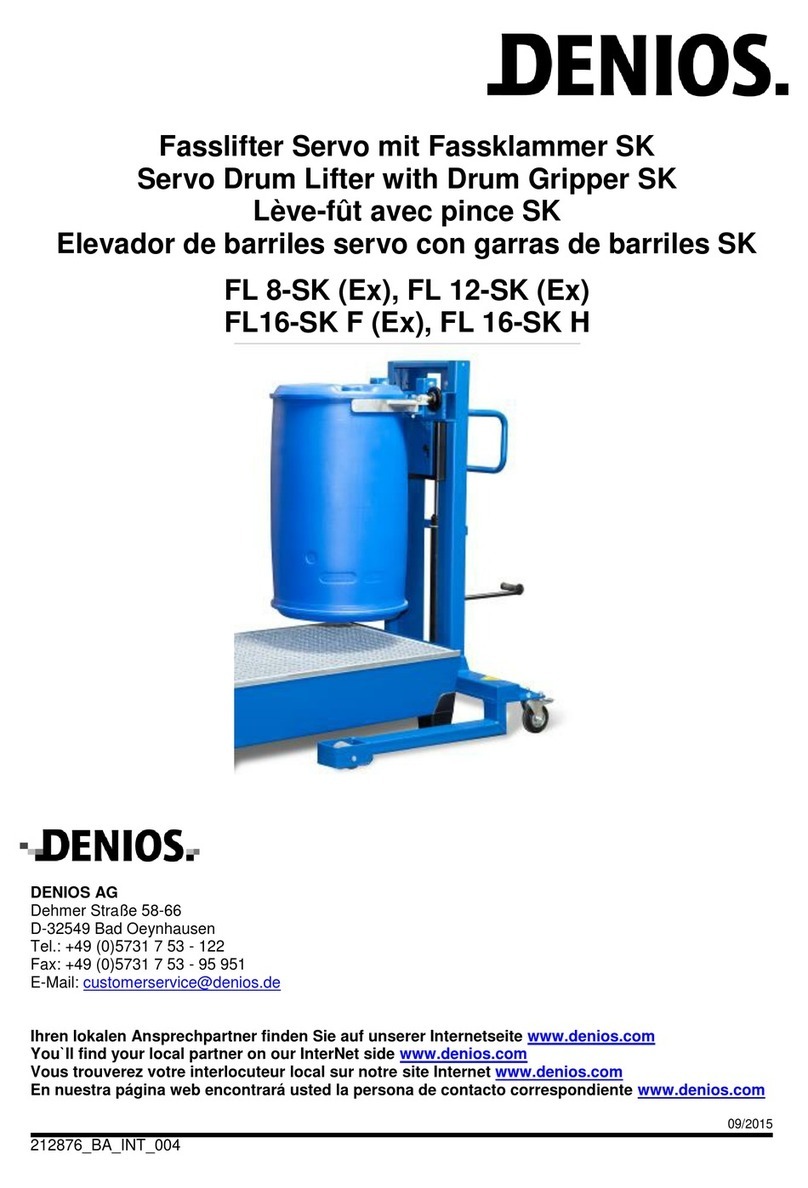
Denios
Denios FL 8-K User manual
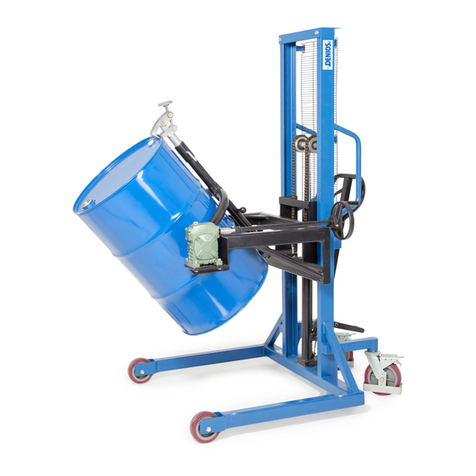
Denios
Denios FW-D User manual

Denios
Denios Drumlifter LD-SK User manual
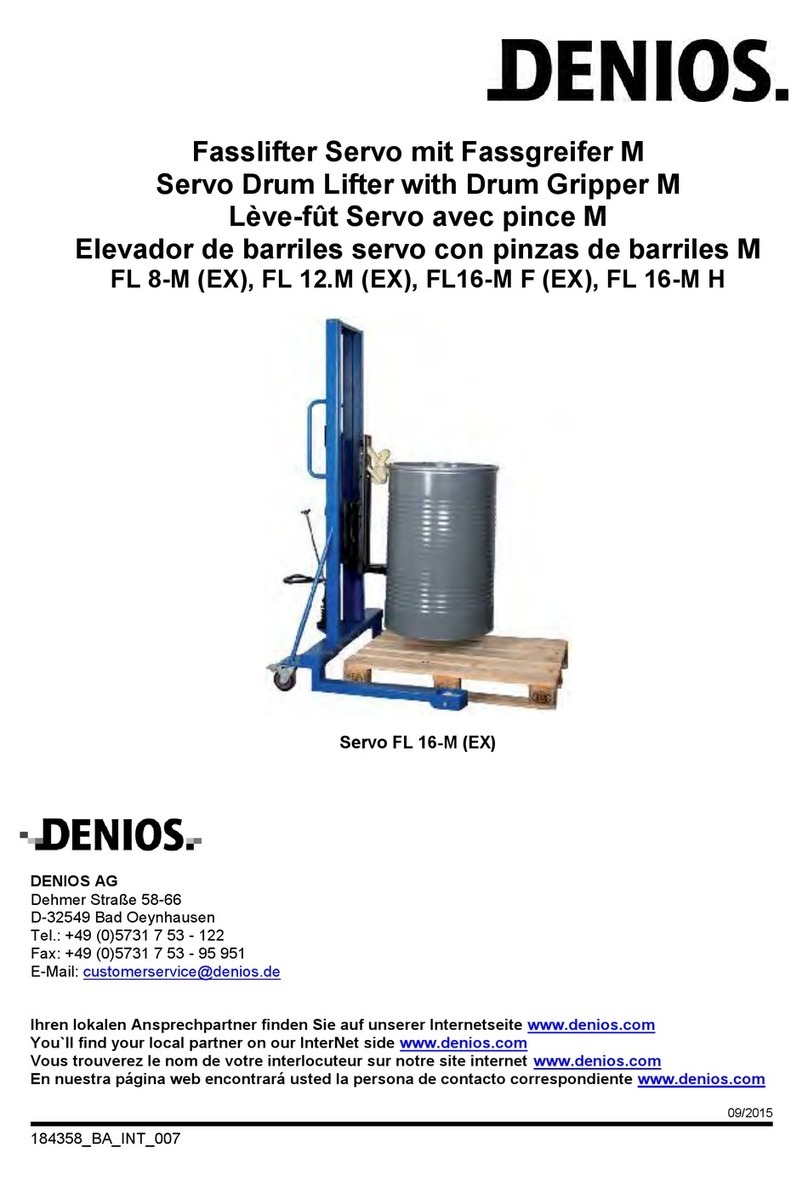
Denios
Denios Servo FL 8-M User manual
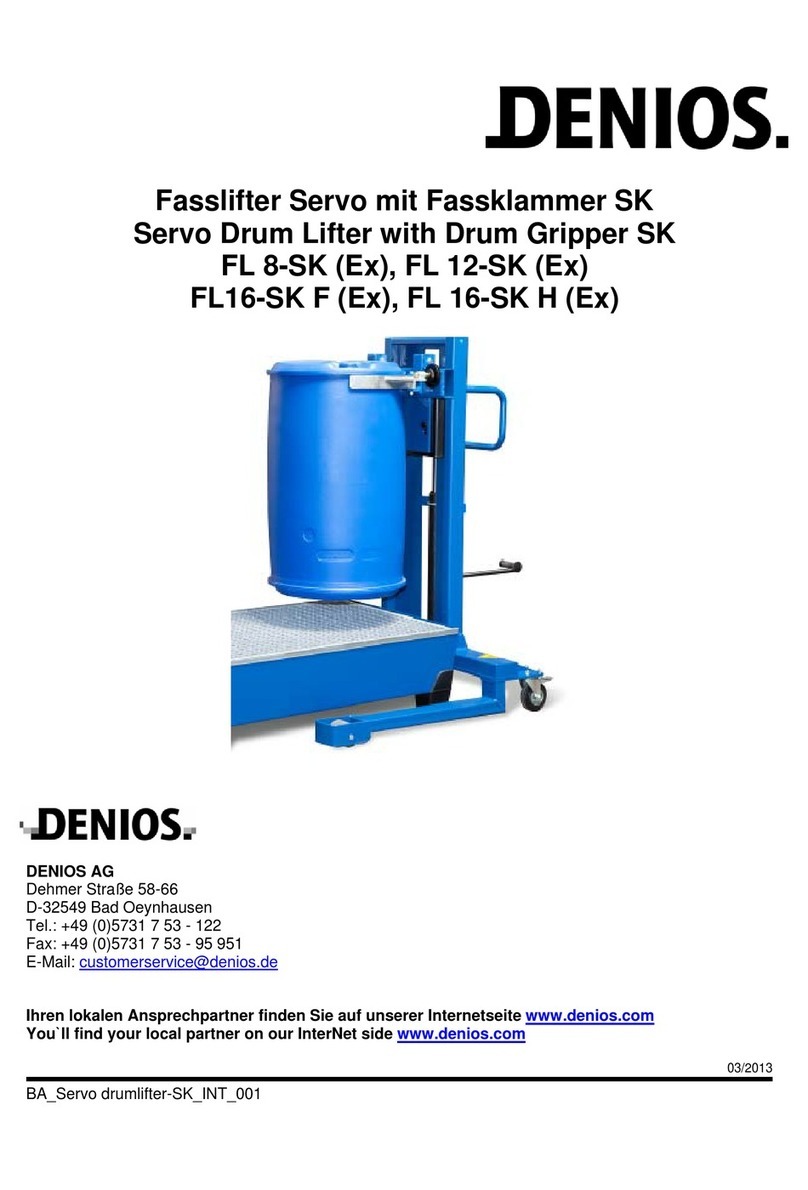
Denios
Denios FL 12-K User manual

Denios
Denios Secu Ex User manual
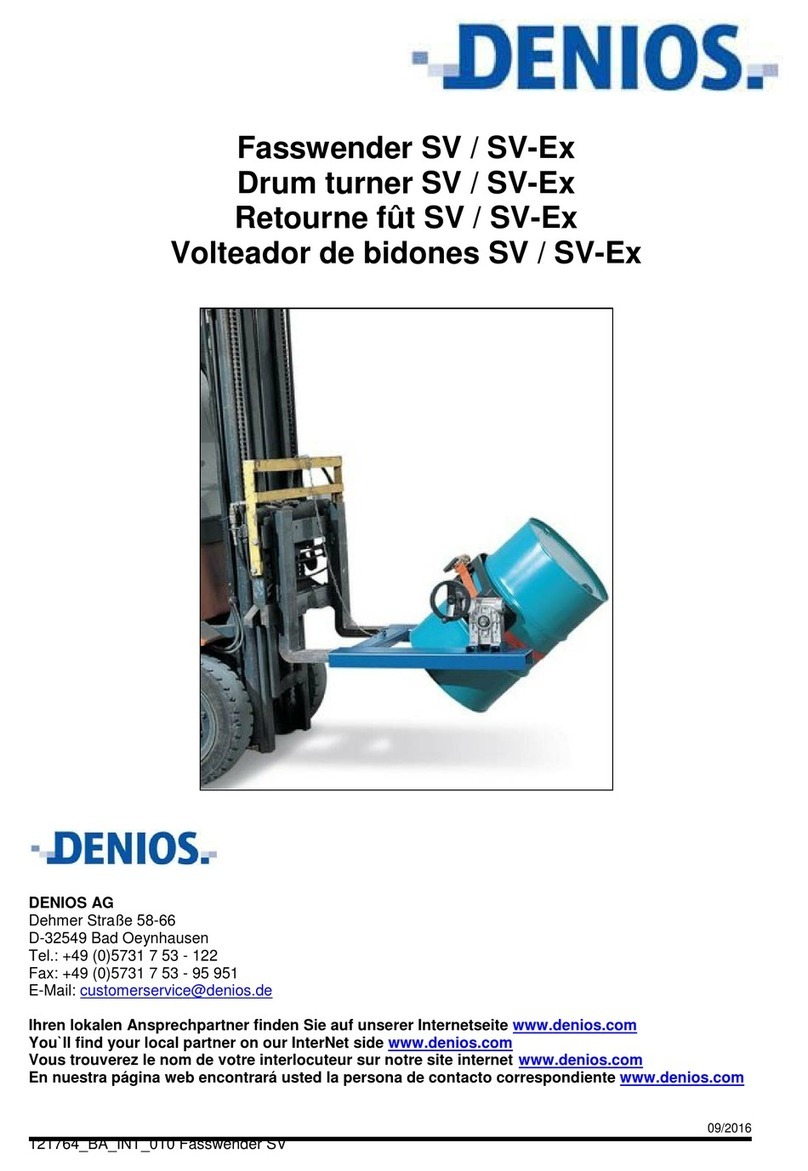
Denios
Denios SV User manual
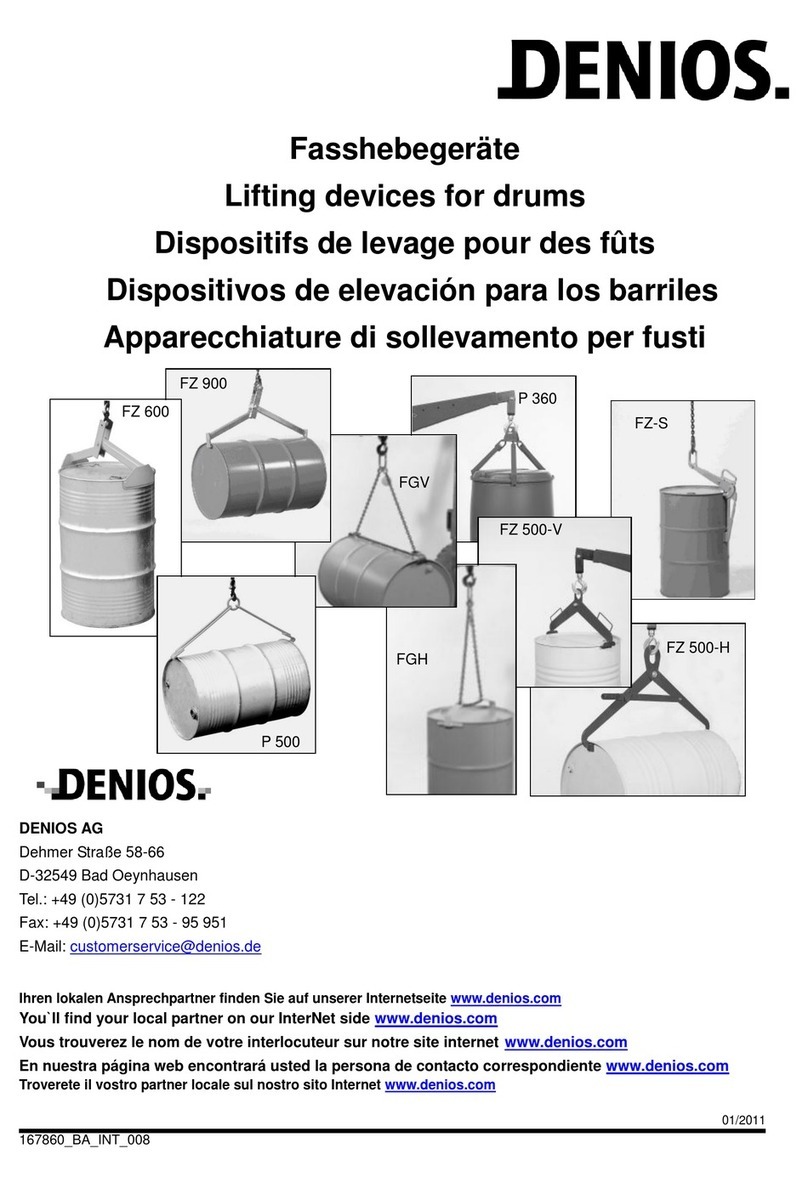
Denios
Denios FZ 600 User manual
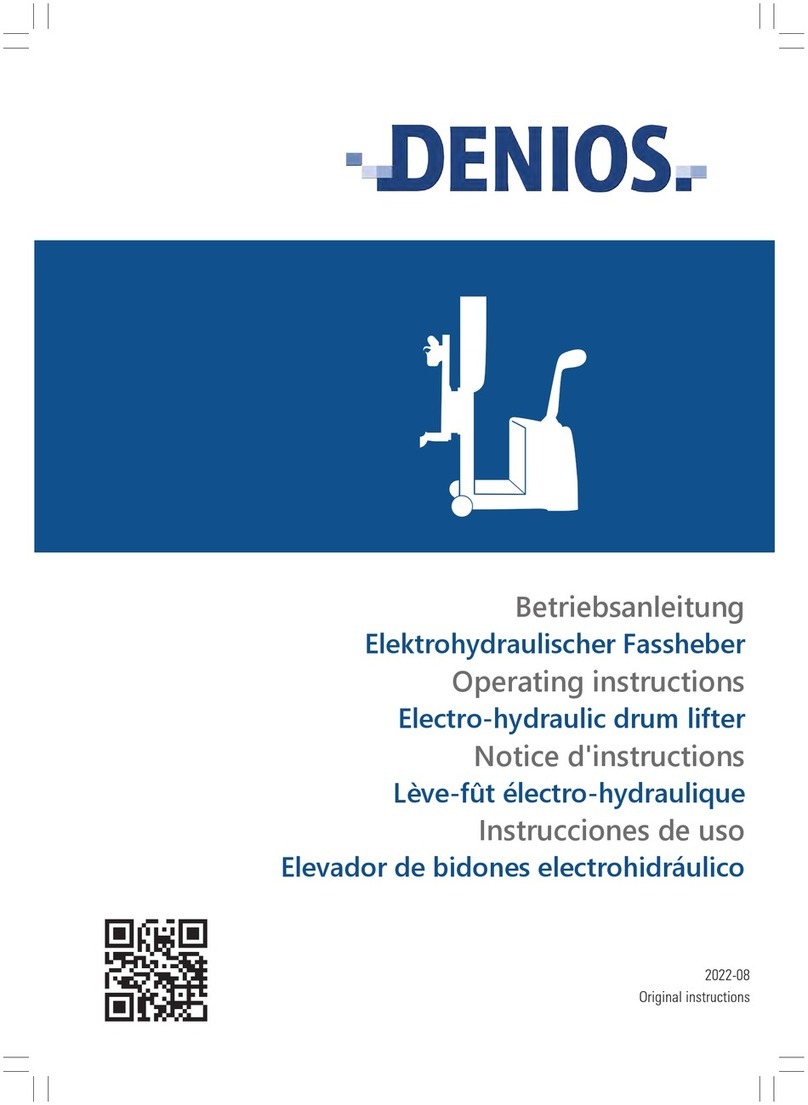
Denios
Denios VH-WSC Series User manual

